By Maggie Shui
“We have a different bone structure around our eyes,” says Katherine, “and they have more… what do I say, 3D features?”
There’s lots of giggling as we parse this topic. It’s a concept that a lot of people with East Asian features understand, but perhaps don’t often have the chance to put into words - at least not in English.
As a kid, beauty was as simple as smearing creamy gunk on my eyelids, or drawing a heart/potato on my nail with a silver nail art pen. As I got older, beauty became more complex. Gradually, my face, my body, the features that I was born with, became anomalies to be fixed or problems to be solved.
Smokey eye looks from YouTube tutorials overwhelmed my hooded eyes. Sunglasses fell off my face because my nose bridge wasn’t tall enough to keep them up. The first foundations I tried looked pinkish on my skin. The makeup artist who did my Year 12 ball makeup told me East Asian people can’t really wear false eyelashes.
The beauty ads, magazines and products available at Farmers seemed hostile. There was a constant, pulsing unease under my skin because I didn’t quite fit my world. I quietly yearned to slot neatly into the market and the culture.
But then, the market and the culture evolved; we entered an Asian beauty revolution. In the western world, we saw an influx of products, concepts and styles that travelled here from East Asia - mainly South Korea and Japan - and were adopted by both Asian diaspora and non-Asians alike.
K-beauty - Korean makeup and skincare - is at the vanguard of this revolution. BB creams (for Blemish Balm or Beauty Balm) are a popular Korean concept (although invented by a German dermatologist) that introduced the western market to something that had a bit more coverage than a tinted moisturiser, but a bit less coverage than a foundation.
BB creams were soon followed by CC creams, DD creams and cushion compacts. By the end of 2013, major western beauty brands had their own versions of all the above. And then came the skincare wave: essences, sheet masks, Japanese sunscreen, and the quick and snappy Korean 10-step skincare routine.

Hikoco, a Korean beauty retailer in Auckland, launched in 2016 and has since become a popular store for fans of Asian beauty.
Demand for East Asian beauty products have continued to grow since then, with Korean cosmetics exports totalling $7.5 billion in 2017, which is four times that of 2013, according to Business Korea.
What can we attribute this massive growth to?
K-Pop is one culprit. Kate, a store manager for the New Zealand K-beauty retailer Hikoco, says, “when people look at Korean idols, they think, ‘Oh, their skin is so fair and nice.’” The Korean Wave, or Hallyu, is made up of Korean pop culture items - K-pop, K-dramas and the celebrities attached to those things - which have gained global popularity over the past decade (MTV has just announced that the VMAs will now have a K-pop category). Now, it turns out the wave has also brought to our shores the cosmetics that those celebrities purportedly use.
But we can also attribute the growth in demand for Asian beauty products in the western world to, well, the very existence of Asian people in the western world.
Katherine, a Chinese New Zealander and engineering student in Auckland, says the western beauty sphere a couple of years ago was “mainly dominated by a white market. It was catering to that demographic, but not really diverse in what it offered.”
Many people with East Asian features like Katherine and myself who aren’t exactly beauty gurus (even with her added knowledge today, Katherine declares her skill level at a solid “Completely Average”), were left floundering in our teen years when it came to figuring out how to apply makeup in a way that suited our faces.
Katherine, 21, says her interest in makeup grew with the rise of Asian beauty.
“In the past, my sources for information were mainly western sources,” says Katherine, “and they had quite a different methodology to doing their makeup. It was things like contouring, and really dramatic eye makeup that didn’t look good on me. I mean, it looked like I had a bruised eye or something.”
Katherine was not alone in this bruised eye situation. Melinna, a music teacher who moved to New Zealand from Indonesia 15 years ago, says, “if you put a full-on, highly pigmented eyeshadow on a monolid, you’ll look like you just got beaten up or something. Yes, I’ve tried it and I looked like someone who’d just gotten beaten up.”
So why is this the case?
Both Melinna and Katherine demure that their failed eye makeup attempts were partly due to their lack in skill. But another reason was that the makeup styles they were trying were better suited to people, usually not of East Asian descent, with different facial features to them. And describing exactly how those facial features differ is tricky - and a bit of a minefield.
As Katherine and I grasp at words to describe how our facial structures might differ to a non-Asians, I suggest “depth”. “Yes,” says Katherine, “they have more depth. So you can’t really enhance the crease area around our eyes as well, because we sort of have a smoother area around the eye, if you know what I mean? It’s like smoother rather than sculpted? I think? Is that the right word?”
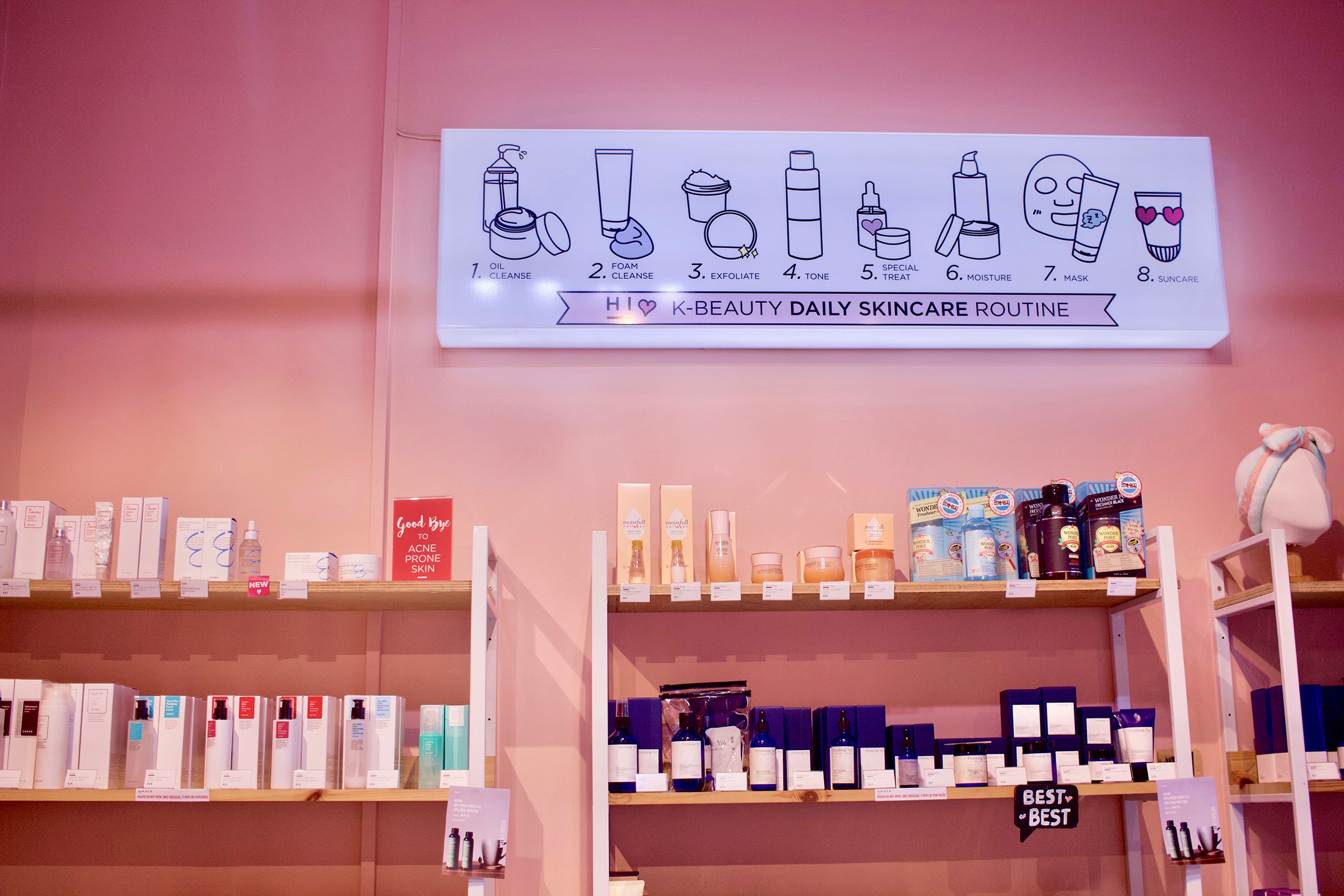
The 8-step (or 10-step) Korean skincare routine was introduced into the western beauty lexicon a few years ago.
Kate from Hikoco suggests that some Asian eyes “are more ‘stuck on’ to the face,” with the same implied question mark present in the inflection in her voice. Inevitably and understandably, the addendum comes that she doesn’t mean to be racist when she says these things.
But how could we ever group Asian people trying to put into words the general commonalities among our facial features with that kid in my Year 4 class who piped up with the pressing question, “If Asians are so smart, why do they have such flat noses?” (Sitting on the mat in Room 11 of Kelston Primary School, my 8 year-old self was too blissfully naïve to be hurt. Instead, I worked my brain into a Möbius strip-like tangle trying to unravel the logic behind the question as the teacher told the kid off.)
If anything, verbalising things as simple and real as the shapes of our eyes, or the contours of our faces, in frank and non-judgemental ways, allows us to normalise them. And then, we can cater to them.
A few years ago, as Asian beauty culture began to spread around the world, Melinna and Katherine started to see Asian beauty vloggers pop up on their YouTube homepages. Alongside the expanding market, Asians were gaining visibility in the online world around them.
“I could see a face that kind of looks like mine, so I’ll be able to relate more to that,” says Katherine. “And it looks good on them, so hopefully it’ll look good on me too.”
For Melinna, YouTube was a major influence in her own makeup self-realisation. One of the first ever Asian beauty YouTubers was Michelle Phan. However, Phan had a more western style of makeup that didn’t resonate so much with Melinna, and had double eyelids which wear makeup in a different way to monolids.
“I put on eyeliner but it would just disappear. But then I’d see my friends who have double eyelids, and they just draw a line and you can notice the difference. I’d be like “Ooh, I can try that” but then it’s just like “Hmm, wonder why it didn’t work out.”
“I think people started to notice that as well, that we need more options. You can see in the YouTube comments saying, “Hey, can you please do a YouTube tutorial for monolid makeup,” and eventually it just started growing from there.”
As Asian beauty culture grew, more Asian vloggers began to gain prominence, which meant a wider range of Asian faces. Eventually, Melinna came across YouTubers like FrmHeadToToe and Tina Yong who demonstrated makeup looks on monolid eyes similar to her own. (Today, we’re spoilt for choice for monolid tutorials online - even Rihanna’s cosmetics brand Fenty Beauty has a video tutorial for monolid makeup.)
“Tina Yong actually has double eyelids, but she likes to make videos with people who have monolids or hooded eyes. And that’s really helpful, because she’s aware that she’s got double eyelids, but she has viewers who have monolid or hooded eyes, and want to learn how to do makeup for their eyes. So that’s really thoughtful.
“I think if I got into beauty and makeup a few years earlier than I did, it would have been harder,” says Melinna. “Those Asian brands wouldn’t have been in New Zealand yet, and I wouldn’t have access to those YouTube videos that I found so helpful.”
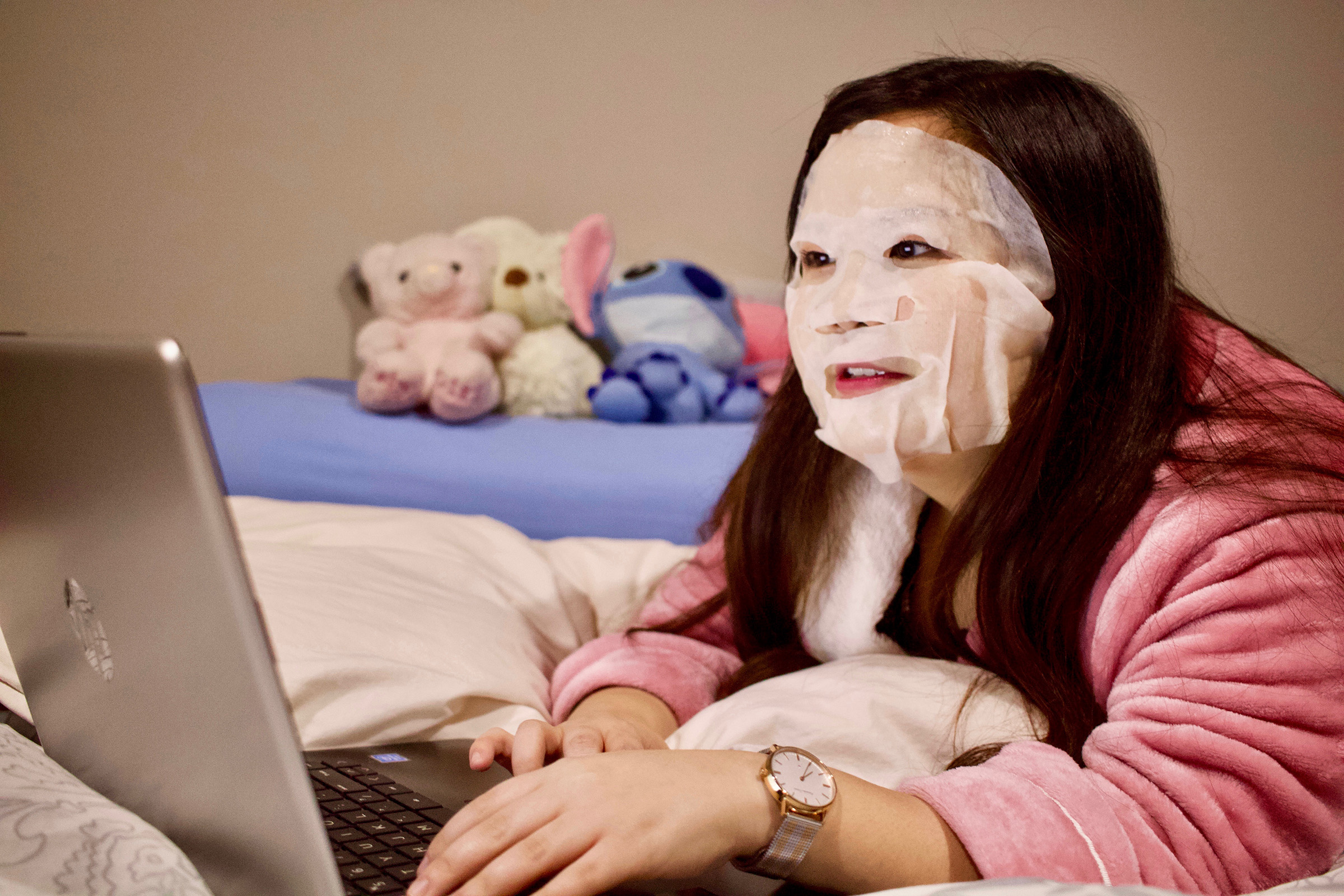
Another benefit of the Asian beauty wave for Melinna, 24, is the influx of sheet masks.
And now, we have physical stores in New Zealand like Hikoco as another source for Asian beauty information, styles and products.
Kate from Hikoco guesses that around 80% of their customers are Asian, and they sometimes come into the store wanting to learn how to do certain makeup styles they’d seen online, such as the Asian straight eyebrow look, or something called the ‘puppy eye’.
“We do have a lot of people coming in asking about the ‘puppy eyes’ look, which is an Asian style of drawing your eyeliner on a downwards angle.”
With a classic ‘cat eye’, the eyeliner begins near the inner corner of the eye and extends across the eyelid to the outer corner, before ending in an upwards flick. With the ‘puppy eye’, the eyeliner begins near the outer corner of the eye and you draw a short line that’s angled slightly downwards, like an extension of the natural line of your eye. Take your pick of domesticated animal inspired eyeliner.
“To describe puppy eyes,” says Kate, “I would say, if you look at them, they look very nice and girly. Calm, and more like how a flight attendant would look. Helpful, lovely, pretty. I would say it’s a style that’s more likely to suit Asian people’s eyes.
“Once we show [our customers] how to do it they say, “Oh my god, I never knew it was that easy. It was that simple, but I was struggling to do it.” They always only knew how to draw the ‘cat eye’ technique whereas they’d never tried the ‘puppy eye’ look.”
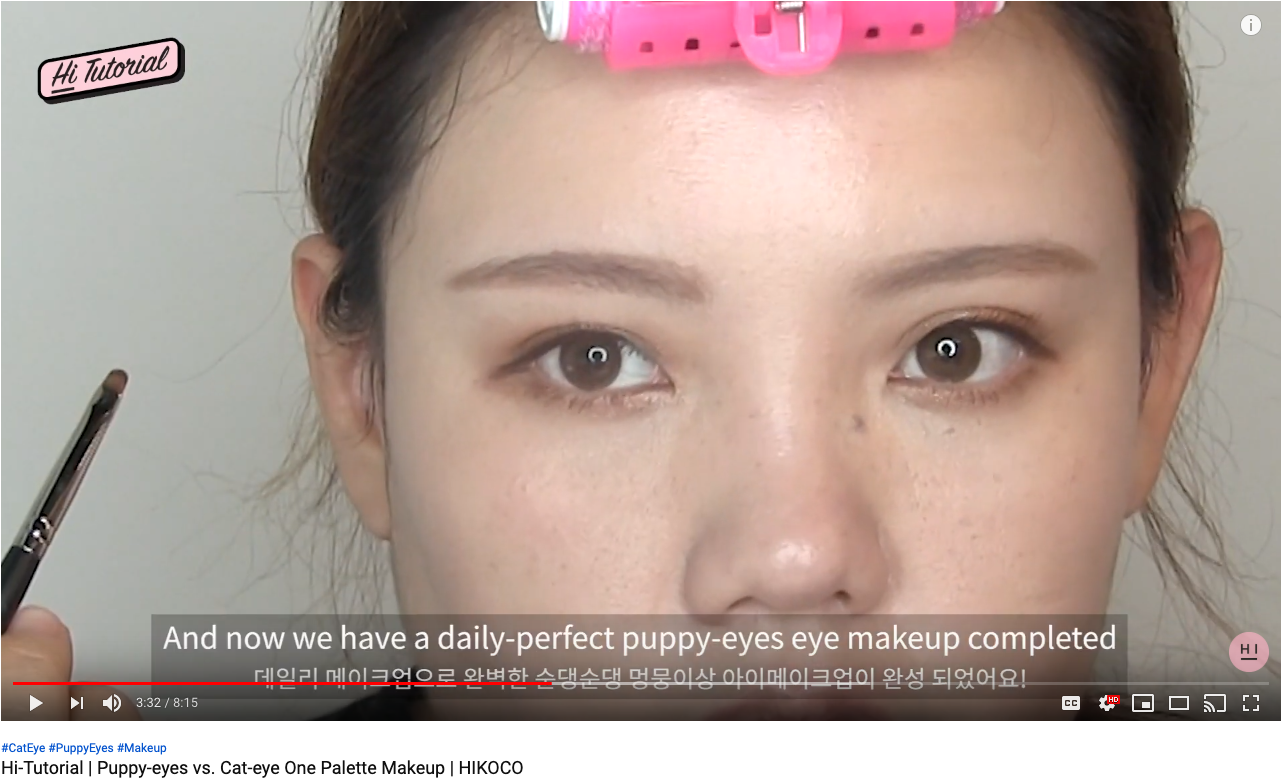
A 'puppy eye' makeup tutorial from Hikoco's YouTube channel.
Jennifer, a Hikoco store employee that everyone deemed the most skilled puppy eye artist, demonstrates the look on my eyes. The eyeliner itself is natural-looking and barely noticeable (she uses a brown eyeliner as apparently black is out), but the effect is evident. It elongates my eyes a little, and the vibe it gives off is indeed more ‘sweet flight attendant’ rather than ‘just did five shots of soju and now I’m ready to go clubbing’.
“Our customers feel like they’re finding more ideas that suit them,” says Kate. “They want more ideas for their makeup. All the same cat eye is kind of boring.”
Katherine is not a fan of the puppy eye for herself. “Um, I don’t think it works on me because I just look sad,” she jokes. “So I would tend to go for a cat eye.”
But the key difference is that she was able to learn the puppy eye existed in the first place, and was able to give it a go.
With the growth of Asian beauty culture around the world, people have access to a whole other range of styles to experiment with and draw from when figuring out the looks that work best for them. Kate says, “Asian beauty has helped [our customers] find their own style, their own Asian style that they were trying to do before.”
Reflecting on her own personal journey with beauty and how its been shaped by the wider culture, Katherine says, “I would say my interest in beauty has grown with the popularisation of Asian beauty, and these East Asian beauty products that have been introduced. There’s more relevant resources that I can find and incorporate into my routine.”
Angela (a friend of Katherine’s that happened to be walking by, and who’s eyes lit up when she heard we were talking about Asian beauty) sums up the key positive outcome to this Asian beauty revolution: choice.
“Well, it’s just an increase in options that you can take, right?” says Angela. “It’s more accepted now to follow a different beauty standard, and still be counted as a normal look. Like before, it might’ve been like, oh, that person’s so weeaboo, or so koreaboo, but now it’s like, oh yeah, it’s just another look. It’s just another fashion style.”
This expansion of options is most evident when we see people picking and choosing, and mixing and fusing styles for themselves. When it comes to the all-important brows, Asian style brows tend to be straighter and softer, whereas western styles are more dramatic and arched.
“Initially, when I was in my more western makeup phase, I did do the arched thing, and I just looked scary,” says Katherine, laughing. “But I don’t think I suit the straight style either, so it’s kinda somewhere in between.”
We have Asian fusion in our food, so why not in our brows as well? Katherine has the soft shell crab tacos of brows. Within her brows, we can see the benefits of diversity: expansion of choice, the ability to experience something that resonates with and fits you, the invention of new possibilities.
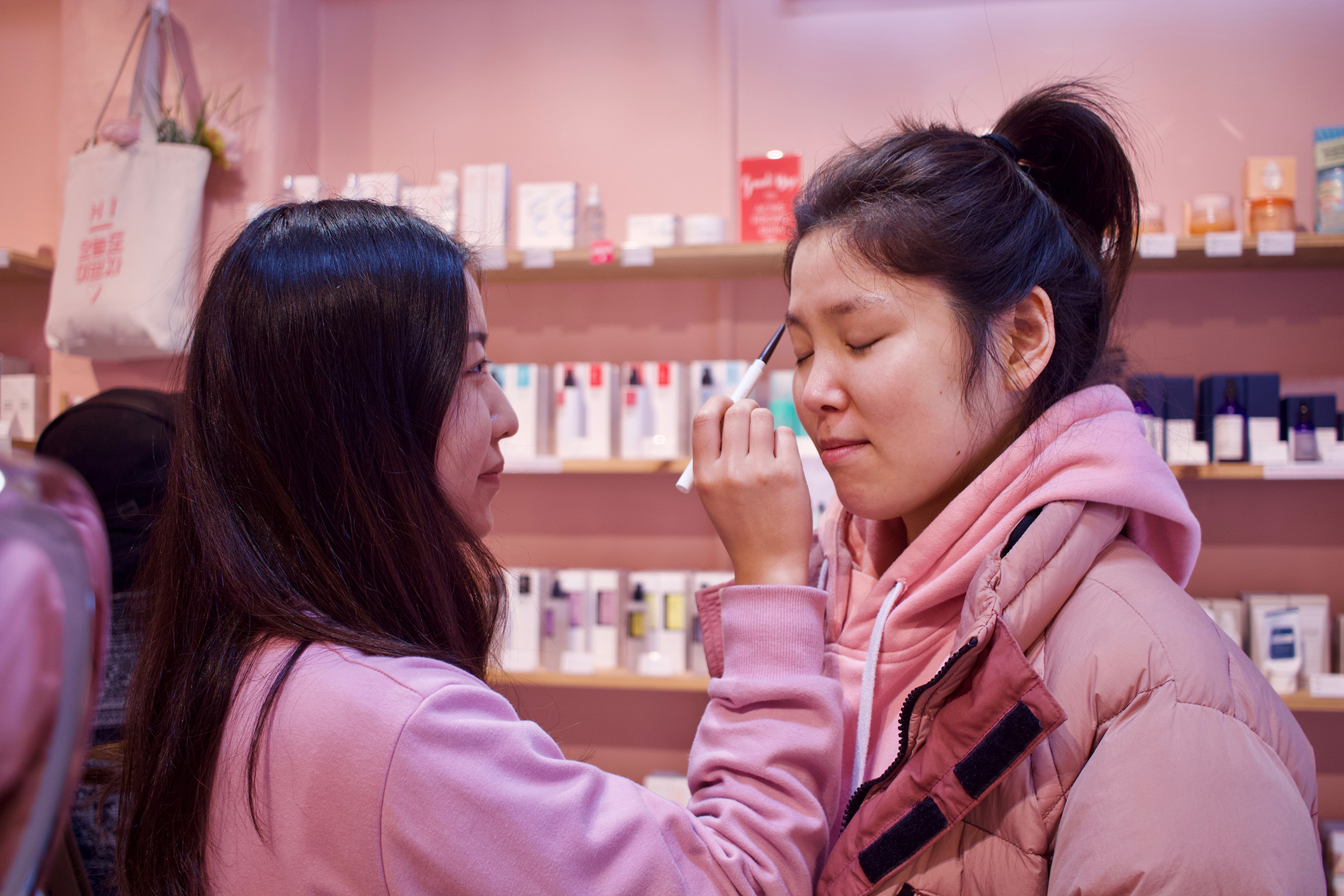
Asian style eyebrows tend to be straight or softly arched - at least, that's the trend for the moment.
And why does all of this back and forth about makeup and beauty even matter?
“It’s hard to find the right words but it makes me feel good inside,” says Melinna. “If you feel like you look good, you feel good mentally.”
One afternoon when Melinna was shopping in Farmers, a white woman came up to her asking for advice on Asian beauty products. The notion of being considered an authority that can give beauty advice, after feeling like she was on the periphery for so long, had a curious effect on Melinna. If we put aside the racial profiling (“This Asian here can tell me about skincare!”), it was oddly affirming.
“I felt really good. I just found it really interesting how she came up to me and assumed I would know everything.”
“I think makeup can be a tool for confidence,” says Katherine. “It’s not that I’m insecure without my makeup, but it’s more like, with makeup, I can be this way or I can be this way. You can change up your looks depending on what you want to feel.”
Asian beauty’s role in diversifying western beauty culture might prompt comparisons to the Black is Beautiful movement of the 60s in the states. African Americans worked to dismantle the notion that black facial features, skin and hair needed to be altered, through methods like skin bleaching and hair straightening, in order to be beautiful.
But while that cultural movement focused on making changes in ideology and elevating black features, the same can’t really be said for Asian beauty; it’s more a movement of capital rather than ideology. And when things are led by capital, considerations of their social impact tend to fall on the wayside.
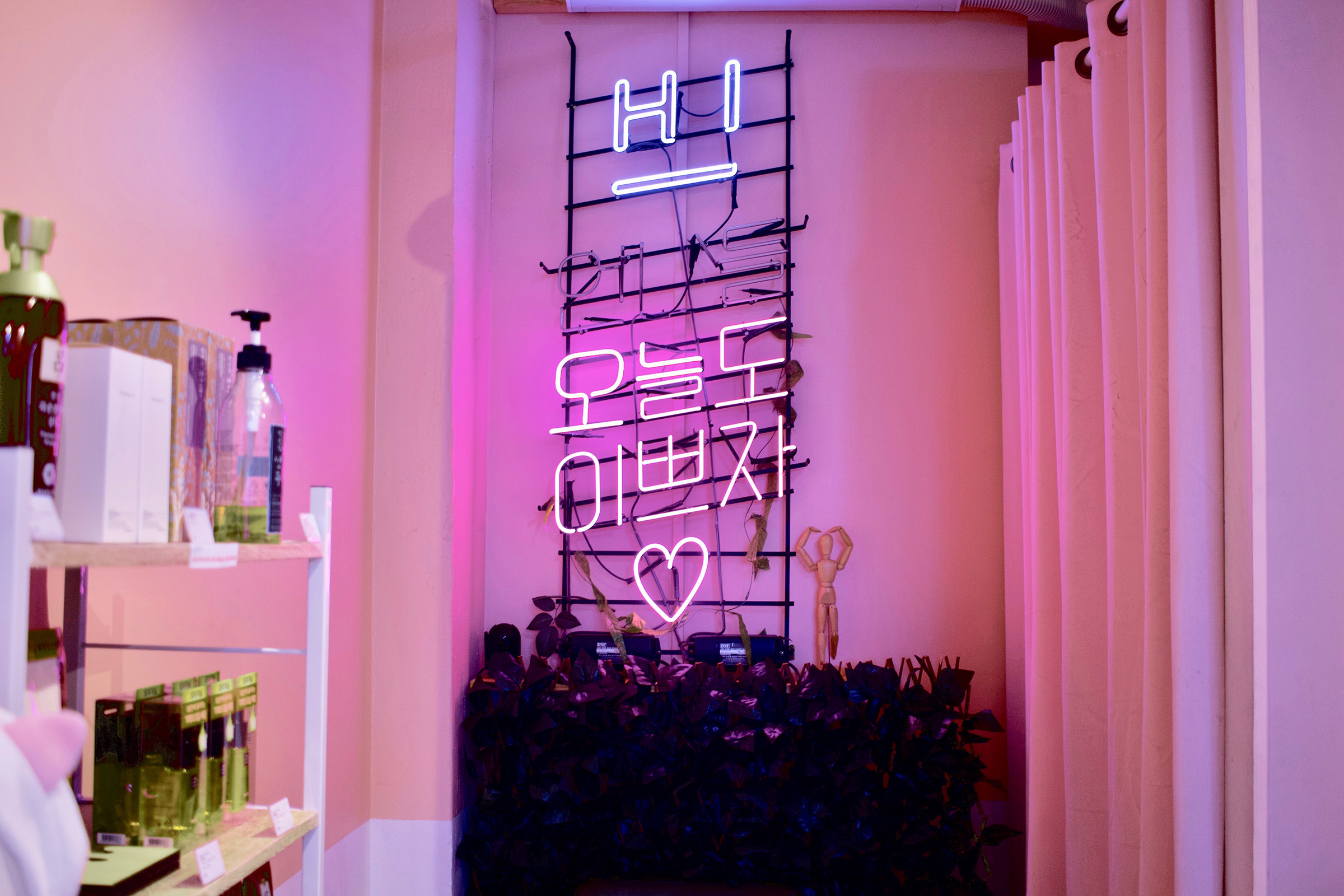
A sign in Korean reads, "Hi, let's be pretty today."
Reflecting on East Asian beauty standards, Angela says, “there’s a massive problem with the Korean beauty standard as well, as we all know. It’s so perfect; it’s like a different version of the Kardashians. It’s like the Asian version of the Kardashians.”
We have expanded choice in styles and products - and with them come another set of standards. Those standards are perhaps different to what’s currently in the mainstream, but they are just as narrow and hard to attain.
One trend that has travelled here from South Korea is the phenomenon of ‘glass skin’ - a term to describe the plump, dewy, poreless skin of dreams.
“Oh, that’s great if you can achieve it,” says Angela. “But usually the natural looks need more makeup and effort, because you’re trying to fabricate natural-ness, and that’s really hard.
“And then, the idea is created online where people can edit their images, but us as the public probably aren’t fully aware of that. They won’t just tell you, “Yo, I edited this photo to create this final, completed look.” The actual look might be close, and that’s already really good, but you won’t actually achieve perfection. And the people who try to recreate this look, they’ll probably feel bad because they haven’t reached the perfection that was actually done by a machine.”
Indeed, glass skin isn’t humanly achievable as we do, in fact, all have pores. Like so many beauty standards, it is based on a fiction.
“Diversity is always good,” concludes Angela, “but you have to know when it’s turning into another impossible standard.”
Mary Wollstonecraft, the OG feminist (and mother to Mary Shelley who wrote Frankenstein), called beauty a “gilt cage”. Covered in gold leaf, it’s pleasing to look at and can give us some satisfaction - but it’s still a cage.
The Asian beauty wave has given a group of people, previously underserved, a whole new set of tools to work with. They can be tools for self-expression - a way to show on the outside who you feel you are on the inside on any given day. And as Katherine, Melinna, myself and many other members of the Asian diaspora can attest, that can bring a unique joy to your life. But they can also be tools of restriction and compliance. It’s up to us which form of use we want to perpetuate.